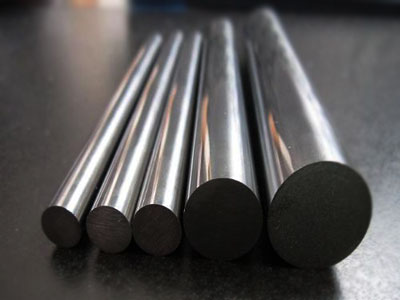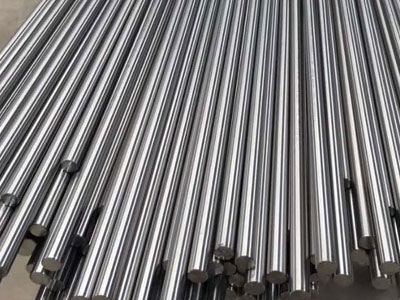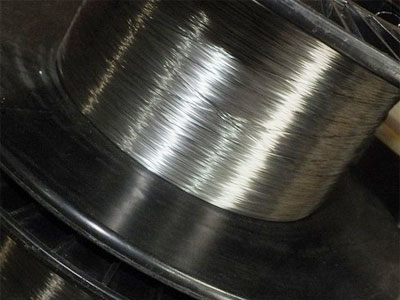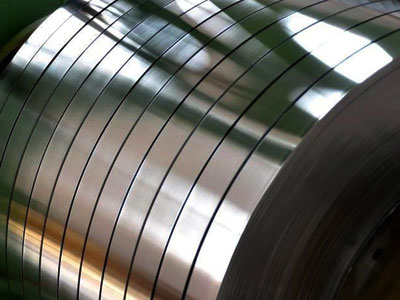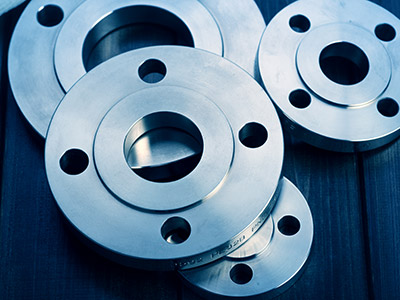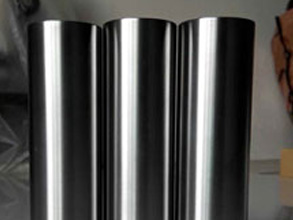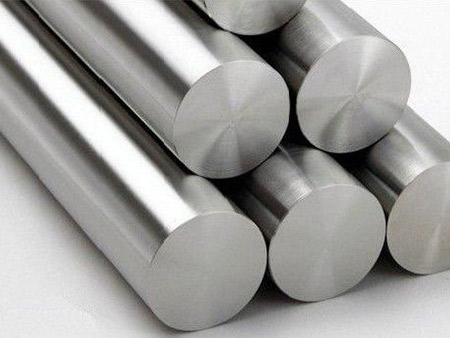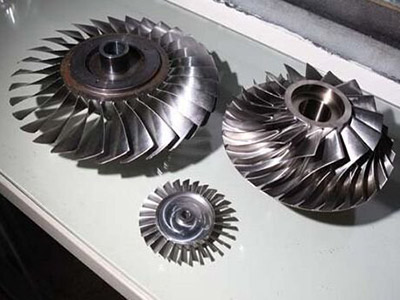Nb521 Alloy: Composition, Properties, and Applications Explained
views, Updated: October 17, 2025 by aemmetal
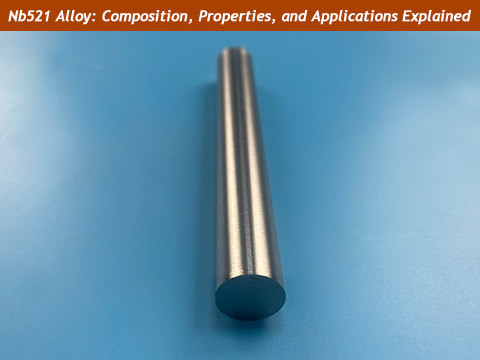
What Is Nb521 Alloy?
Nb521 is a high-temperature niobium alloy designed to perform in extreme heat where regular metals lose strength. It belongs to the family of refractory metals, which are known for their very high melting points and excellent stability.
This alloy is mainly made of niobium (Nb) metal, with small amounts of tungsten (W), hafnium (Hf), and titanium (Ti). Each element plays a role: tungsten improves strength, hafnium helps resist oxidation, and titanium enhances toughness. Together, they make Nb521 strong, stable, and resistant to heat and oxidation.
Because of these qualities, Nb521 is widely used in aerospace and rocket engine parts—especially in components such as combustion chambers, nozzles, and heat shields that must survive very high temperatures for long periods.
Compared with other niobium alloys like C-103 and Nb-1Zr, Nb521 offers better oxidation resistance and greater durability under continuous use. It is often chosen for missions or systems that require both light weight and long-term reliability.
At AEM Metal, we produce and supply Nb521 alloy in many forms—bars, plates, sheets, tubes, and custom-machined parts—using vacuum melting and precision forging to guarantee consistent quality, purity, and performance for every order.
Chemical Composition and Microstructure of Nb521
The excellent high-temperature performance of Nb521 alloy comes from its optimized niobium–tungsten formulation, which provides strength, stability, and oxidation resistance under extreme thermal stress. Nb521 uses niobium (Nb) as the base metal, with precisely controlled amounts of tungsten (W), molybdenum (Mo), zirconium (Zr), and trace elements to enhance its mechanical and chemical behavior.
Typical Chemical Composition of Nb521 (wt%)
Element |
W |
Mo |
Zr |
C |
N |
O |
Content (%) |
5.14 |
1.87 |
1.33 |
0.0095 |
0.006 |
0.010 |
Element |
Cu |
Ti |
Fe |
Si |
Ta |
Nb |
Content (%) |
0.001 |
0.016 |
0.001 |
0.0028 |
0.59 |
Balance |
Microstructure and Processing
Nb521 alloy strengthens through both solid-solution and precipitation mechanisms.
Elements like tungsten (W) and molybdenum (Mo) dissolve into the niobium matrix, improving creep resistance and high-temperature strength. At the same time, small amounts of zirconium (Zr) and carbon (C) form fine ZrC and NbC particles, which further enhance strength and stability.
The alloy is produced by vacuum electron beam melting, ensuring high purity and uniform composition. It can be processed through forging, rolling, and extrusion to create a fine, uniform grain structure with excellent plasticity—ideal for forming engine and aerospace parts that must withstand extreme heat.
Key Properties of Nb521 Alloy
Nb521 stands out for its strong balance of strength, ductility, and oxidation resistance—even at temperatures above 1500 °C. Below is a summary of its main characteristics that make it a preferred material for aerospace and high-temperature applications.
1. Mechanical Properties
Nb521 maintains high strength both at room temperature and in extreme heat.
At room temperature, the alloy typically shows:
-
Ultimate tensile strength: ≈ 440–470 MPa
-
Yield strength: ≈ 330–340 MPa
-
Elongation: ≈ 30–36 %
Even at 1500–1700 °C, Nb521 retains much of its strength and structural integrity:
Temperature (°C) |
Tensile Strength (MPa) |
Yield Strength (MPa) |
1450 |
134–157 |
128–130 |
1550 |
109–110 |
104–110 |
1700 |
80–83 |
74–75 |
1800 |
63–65 |
59–60 |
This remarkable performance allows Nb521 parts to work reliably in rocket nozzles, combustion chambers, and thermal shields, where sustained heat and mechanical stress are constant.
2. Physical & Thermal Properties
-
Density: 8.65 – 9.0 g/cm³
-
Young’s Modulus: ≈ 200 GPa
-
Thermal Conductivity: ≈ 10.8 W/m·K
-
Melting Point: ≈ 2630 °C
These properties mean Nb521 combines light weight with high stiffness and thermal stability, outperforming many nickel-based or cobalt-based superalloys when it comes to long-term service in vacuum or inert-gas environments.
3. High-Temperature Stability & Oxidation Resistance
Thanks to alloying elements like tungsten, molybdenum, and zirconium, Nb521 resists both thermal creep and oxidation. At high temperature, it forms a dense protective oxide layer that limits further surface reaction, giving it a much longer lifespan compared with standard niobium alloys such as Nb-1Zr or C-103.
4. Summary of Advantages
-
Excellent strength and ductility balance
-
Reliable mechanical stability up to 1700 °C
-
Low density compared with most refractory alloys
-
Superior oxidation and creep resistance
-
Smooth formability for aerospace manufacturing
Nb521 vs C-103: What's the Difference?
Both Nb521 and C-103 are advanced niobium-based alloys widely used in the aerospace and high-temperature industries.
While they share similar compositions, their strengthening methods, oxidation behavior, and long-term performance set them apart.
1. Composition and Alloying Elements
-
C-103 is primarily composed of niobium with small additions of 10% hafnium (Hf) and 1% titanium (Ti).
-
Nb521, on the other hand, includes tungsten (W), molybdenum (Mo), and zirconium (Zr), with trace carbon (C) to form strengthening carbides.
This difference means Nb521 benefits from both solid-solution and precipitation strengthening, while C-103 relies more on hafnium’s solid-solution strengthening effect.
2. Mechanical and Thermal Performance
Nb521 typically provides higher strength and better creep resistance at elevated temperatures compared to C-103.
C-103, however, has slightly better room-temperature ductility and is easier to weld and form.
Property |
Nb521 |
C-103 |
Main Alloying Elements |
W, Mo, Zr, Ti, C |
Hf, Ti |
Density (g/cm³) |
8.65–9.0 |
8.9 |
Melting Point (°C) |
~2630 |
~2460 |
Tensile Strength (Room Temp) |
~440–470 MPa |
~415 MPa |
Elongation (Room Temp) |
30–36% |
20–25% |
Creep Resistance at 1500–1700 °C |
Excellent |
Good |
Oxidation Resistance |
Higher (due to Zr and C additions) |
Moderate |
Formability |
Good |
Very Good |
Typical Applications |
High-temp nozzles, liners, thermal shields |
Rocket chambers, liners, fasteners |
3. Application Suitability
● Nb521 is ideal for long-duration, high-heat environments, such as rocket engine nozzles, heat shields, and plasma systems, where oxidation and creep resistance are essential.
● C-103 is preferred for components requiring easy formability, weldability, and short service cycles, such as combustion chambers and engine liners.
In short:
Choose Nb521 when you need maximum high-temperature stability and oxidation resistance.
Choose C-103 when you need easier processing and lower production costs.
4. AEM Metal Expertise
At AEM Metal, we supply both
Nb521 and C-103 alloys in a wide range of forms—
bars, plates, sheets, tubes, and custom-machined parts—manufactured under strict vacuum melting and forging control.
Our engineers can help customers select the best alloy based on temperature, environment, and mechanical requirements for aerospace or research applications.
Applications of Nb521 Alloy
Nb521 is widely used in fields that demand exceptional high-temperature performance, oxidation resistance, and long-term structural stability.
Its balance of strength, ductility, and heat resistance makes it a preferred material for aerospace, energy, and research industries.
Aerospace & Rocket Engines
Nb521 was originally developed for aerospace propulsion systems and remains one of the top materials for parts exposed to extreme heat.
Common aerospace applications include:
● Rocket nozzles and throat liners
● Combustion chambers and afterburner components
● Thermal shields and heat-resistant panels
In these systems, Nb521 maintains strength and shape even after repeated heating cycles above 1500 °C, providing longer service life and higher safety margins than conventional alloys.
Power & Energy Systems
The alloy’s high melting point and oxidation stability also make it valuable in energy generation and plasma environments, such as:
● Turbine hot-section parts
● Plasma-facing components in fusion systems
● High-temperature furnace liners and vacuum system parts
Its resistance to creep and oxidation ensures reliable operation in both vacuum and inert-gas conditions.
Research & Advanced Materials Development
Because of its consistent chemical purity and predictable behavior under heat, Nb521 is frequently used by:
● Research laboratories testing refractory materials
● Thin-film coating facilities as base material or sputtering targets
● Universities and institutes conducting high-temperature alloy studies
Why Engineers Choose Nb521
● Stable mechanical performance up to 1700 °C
● Superior oxidation resistance for long-term exposure
● Good workability for forming complex parts
● Reliable performance under vacuum or inert gas
These advantages make Nb521 a trusted solution for modern aerospace and high-temperature systems, where both strength and longevity are mission-critical.
Conclusion
Nb521 alloy is one of the most reliable niobium-based materials for high-temperature and high-stress environments. It offers an outstanding balance of strength, heat resistance, and oxidation stability, making it ideal for rocket nozzles, engine chambers, and thermal protection parts.
Compared with other niobium alloys, Nb521 stands out for its superior long-term stability and creep resistance at temperatures above 1500 °C. This allows engineers to design components that perform safely and consistently, even under the toughest aerospace or energy conditions.
At AEM Metal, we manufacture Nb521 alloy using advanced vacuum melting and precision forming techniques, ensuring high purity, uniform grain structure, and dependable performance.
Whether you need small R&D quantities or large production runs, our team provides custom solutions, technical support, and fast global delivery to help you meet your project goals.
Looking for a trusted Nb521 supplier?


